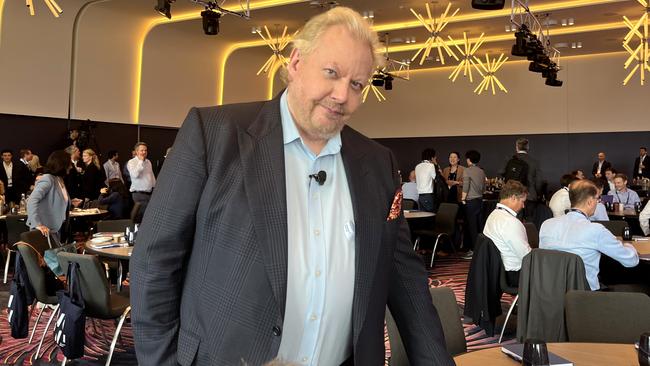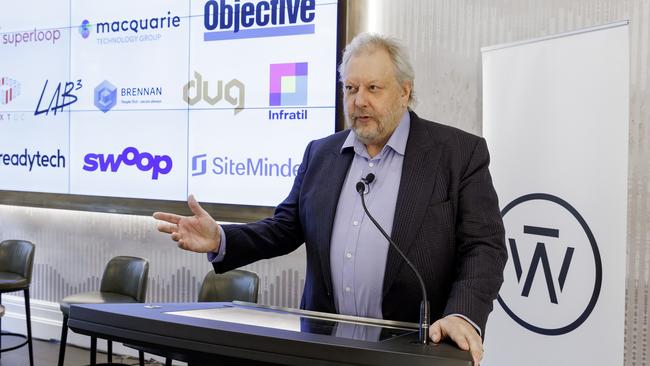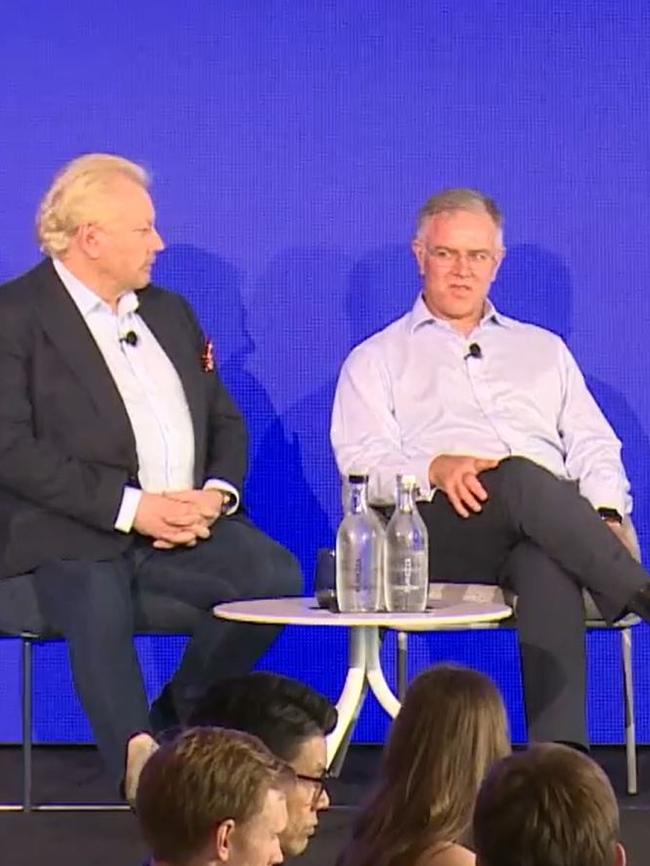What really happened inside the WiseTech boardroom
Richard White is back in control at WiseTech, but its still not clear in what capacity. The mass exit of directors has left the tech company in a full-blown crisis.

Business
Don't miss out on the headlines from Business. Followed categories will be added to My News.
Richard White has given a new meaning to the notion of key man risk. When it came to the crunch, the former WiseTech boss and biggest shareholder was unwilling to relinquish management control of his $32bn tech company even as a new storm gathered over his private life.
The multi-billionaire returned from the summer break with a fundamentally different view from his chairman Richard Dammery on how WiseTech should be run. And with White the 37 per cent shareholder, the immovable force, the independent board members had little choice but to resign en masse.
White last October agreed to immediately resign as a long-serving CEO amid revelations around his relationship with several women outside the company. Instead of being eased out into a consulting role that had been planned, White is now back in effective control and his independent board members have gone.

Even without a formal role in the company, White now plans to be deliver the first-half results on Wednesday along with acting CEO Andrew Cartledge. He’s also calling the shots on rebuilding a depleted boardroom. White is back at WiseTech. But it’s still not clear in what capacity.
What is clear is that there’s another storm brewing. Before the directors quit on the weekend, the WiseTech board had received the final draft of an independent review of White’s behaviour stemming from last year’s revelations.
That review had been planned to be tabled on Wednesday to coincide with the release of WiseTech’s profit numbers. It’s now unlikely the report will see the light of day.
The Herbert Smith Freehills and Seyfarth Shaw review was commissioned to explore whether the governance line remained intact, given White’s behaviour involved events that had happened outside the company. It was also looking as allegations of past behaviour, ranging from expenses to promotion of female staffers.
As far as the board was concerned, if the relationships remained outside WiseTech and were between consenting adults, the reputational risks could be managed, and there was no sign of wrongdoing by White inside WiseTech, that’s where the matter ended.
We still don’t know what the final Herbert Smith Freehills and Seyfarth Shaw review has uncovered. An earlier draft was released last November, which confirmed yet another relationship between White and a current employee, and noted this was disclosed to the board.
That final report, however, was delivered to the board just as new and untested allegations emerged in recent weeks that White had pressured a former female employee, Caroline Heidemann, for sexual favours in exchange for helping her secure a work visa. White intends to defend the proceeding.
White acknowledges there had been consensual relationship with Heidemann until mid-last year, but has disputed the status of her employment, noting she had been made redundant from WiseTech nearly four years earlier.
Amid a stand-off with a powerful shareholder, the final Herbert Smith Freehills and Seyfarth Shaw report and new allegations surfacing, the four independent directors only had one choice.
Crisis footing
The resignation on Sunday of the four directors, including iiNet founder Michael Malone, has put WiseTech in a full-blown governance crisis.
It is without an effective chairman, there’s no independent audit committee, and the 63 per cent shareholders that are not Richard White have no voice in the room. White has secured effective control without launching a buyout.
All this stands to be a major test for WiseTech’s two other big shareholders, Australian Super and HESTA, and whether the industry funds have enough clout to bring the technology company back from the crisis. At the same time their actions will be closely watched, given on Wall Street the corporate mood has started to shift around ESG – environment, social and governance – issues.
White has named former long-serving WiseTech director and near-billionaire Mike Gregg to rejoin the board from Wednesday.

Much of Gregg’s wealth is thanks to his parcel of WiseTech shares from his involvement in the early days of the tech company, so he can hardly count as independent.
Dammery and his fellow independent directors are due to formally resign on Wednesday, meaning WiseTech technically will have the bare minimum of three directors when Gregg joins.
That the majority of the board has walked is simply unprecedented for a top 20 ASX company, and as in the case of Chris Ellison at Mineral Resources it exposes the risks of a founder treating a public company like it is still a private fiefdom.
The board revolt prompted the 20 per cent share price slide, with some big investors opting to cash out rather than face more turmoil. Momentum has already been lost, with WiseTech now issuing its second effective profit warning in three months.
Any succession planning to get a new chief executive in place is likely to have come to a shuddering halt. The 70-year-old White had sold the changes to his role as a step in succession planning.
Elegant solution
In October White had agreed to immediately take on a new consulting role that would specialise in product and design after being prodded and encouraged by Dammery.
This was an elegant solution to the revelations around White’s personal life. For shareholders it was an ideal outcome, given White’s eccentric brilliance would stay with the company. That was something they very much wanted – but other eccentricities would be contained in a sandbox.

The 10-year position would see White report directly to the board, at arm’s length, and away from running the show.
It also would clear the way for a new chief executive to take control where White had left off.
However, when White insisted the position come with the title “Founding CEO”, this was enough to ring alarm bells for some investors. That elegant agreement between White and his board barely lasted three months.
Ultimately, White refused to sign a contract that put limits on his power inside the company. White has asserted to the board that he simply couldn’t perform the new innovation and development role without some sort of authority. He genuinely wanted input into product development; otherwise White – who had lived and breathed WiseTech for three decades – would be relegated to a role of all talk and no action. White’s role and consulting agreement remains up in the air, although this time he has a much friendly board in his corner.
This all puts WiseTech in very dangerous territory. White is clearly calling the shots, and dominates his acting CEO Andrew Cartledge. And without the backing of an independent board, no serious CEO candidate is going to want to take the job until they know where they stand. Indeed, it’s not certain if the CEO search launched last year is even proceeding.
The exit of the four independent directors on principle – including Dammery, a highly regarded corporate governance figure – makes it tough for WiseTech to attract new independent directors that outside investors will be comfortable with.
Since November, these shareholders and many others had been comforted by having Dammery leading the WiseTech board, as well as having White involved.
Without a path forward on governance, super funds may simply opt to take profits to minimise their exposure to residual risk.
WiseTech counts dozens of the world’s biggest logistics companies as its clients.
Any further revelations around White’s personal life will also test their support for WiseTech’s flagship logistics software as rivals circle.
The WiseTech script is now being written in real time. White built the company, and how he chooses to take the next steps could see it all unravel.
eric.johnston@news.com.au
Originally published as What really happened inside the WiseTech boardroom



